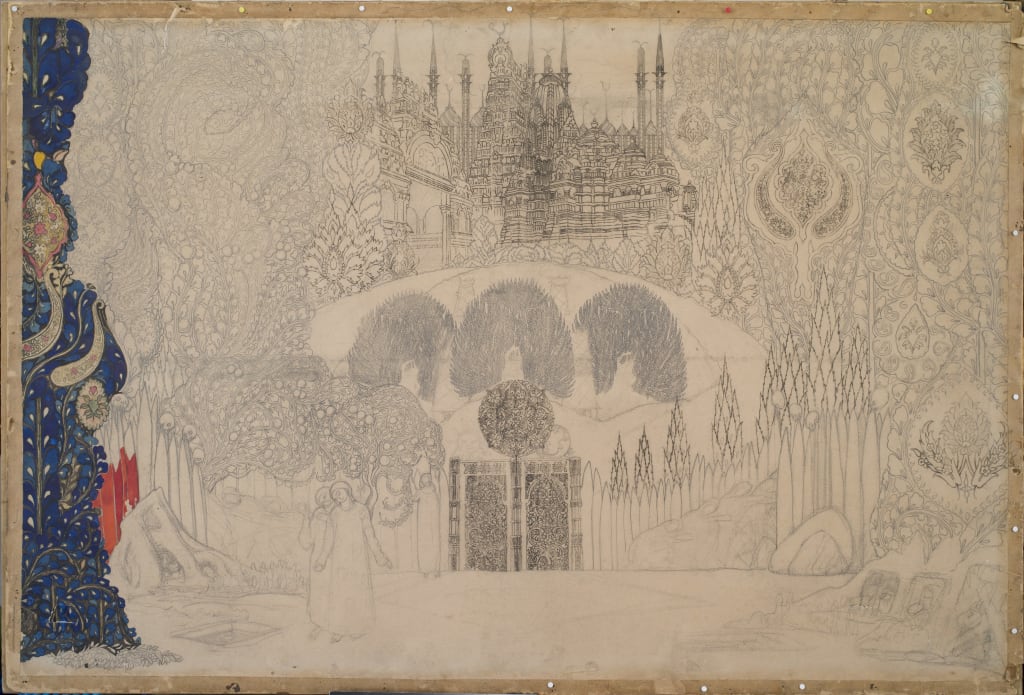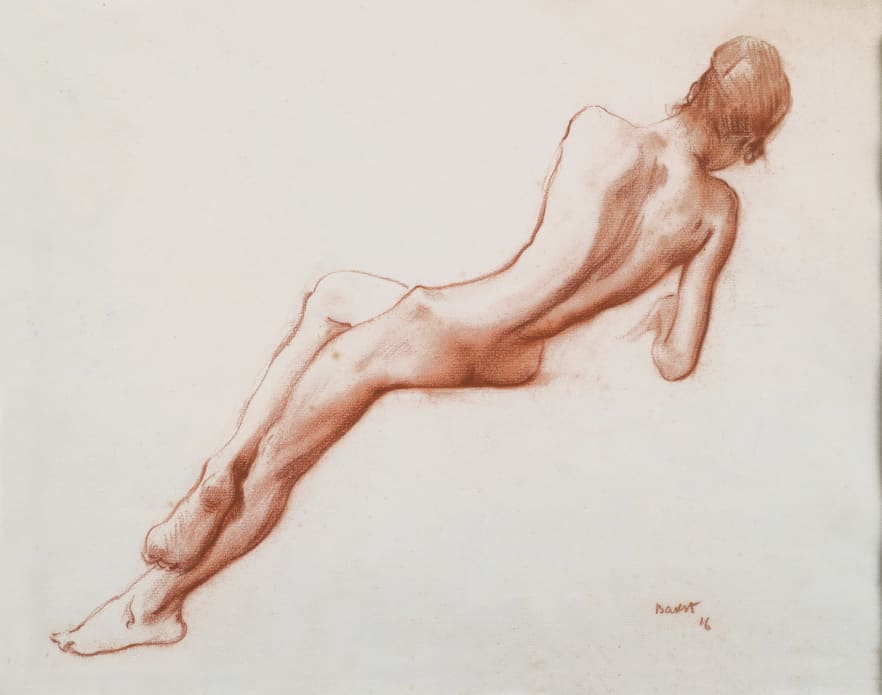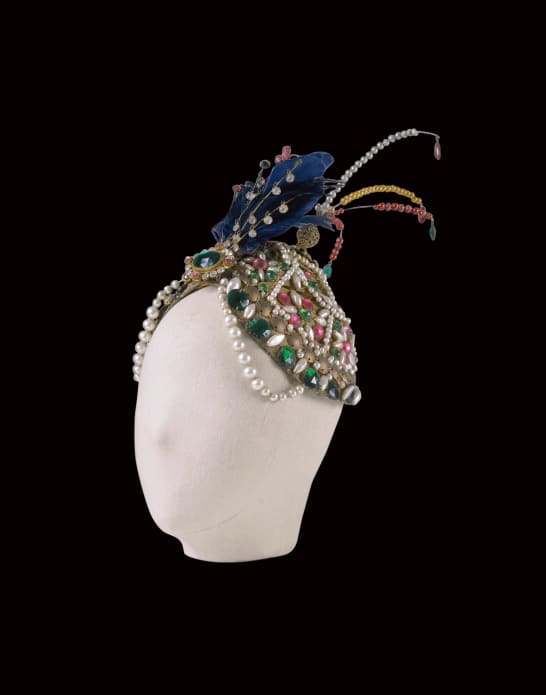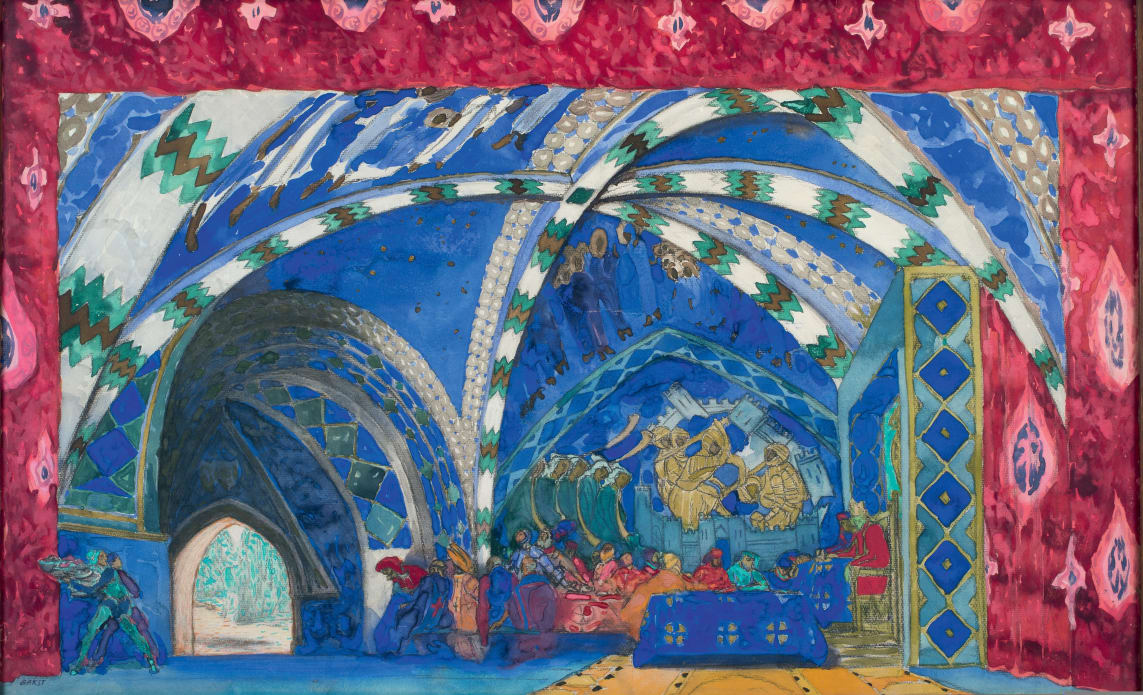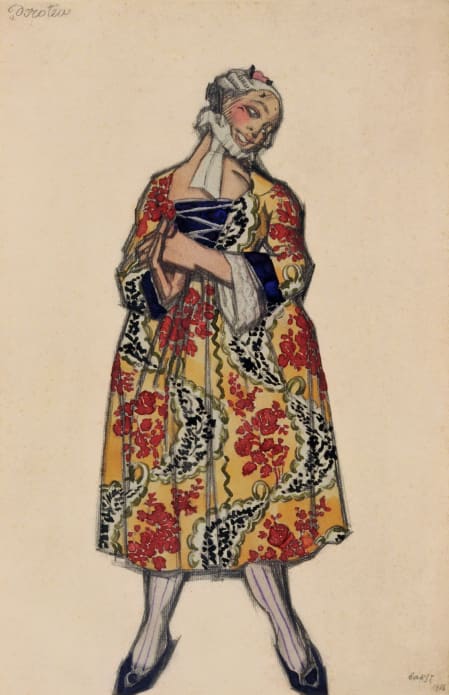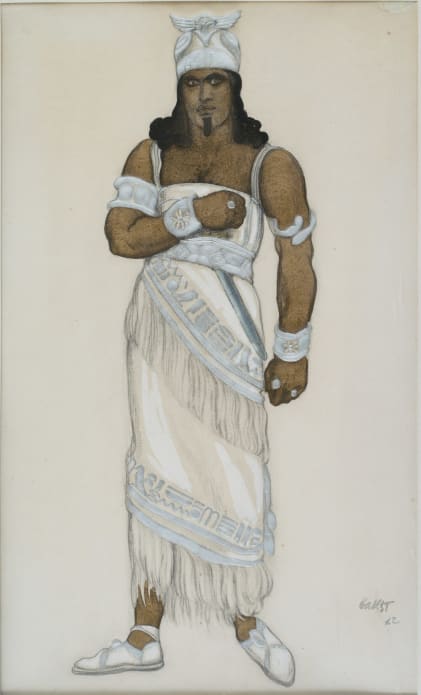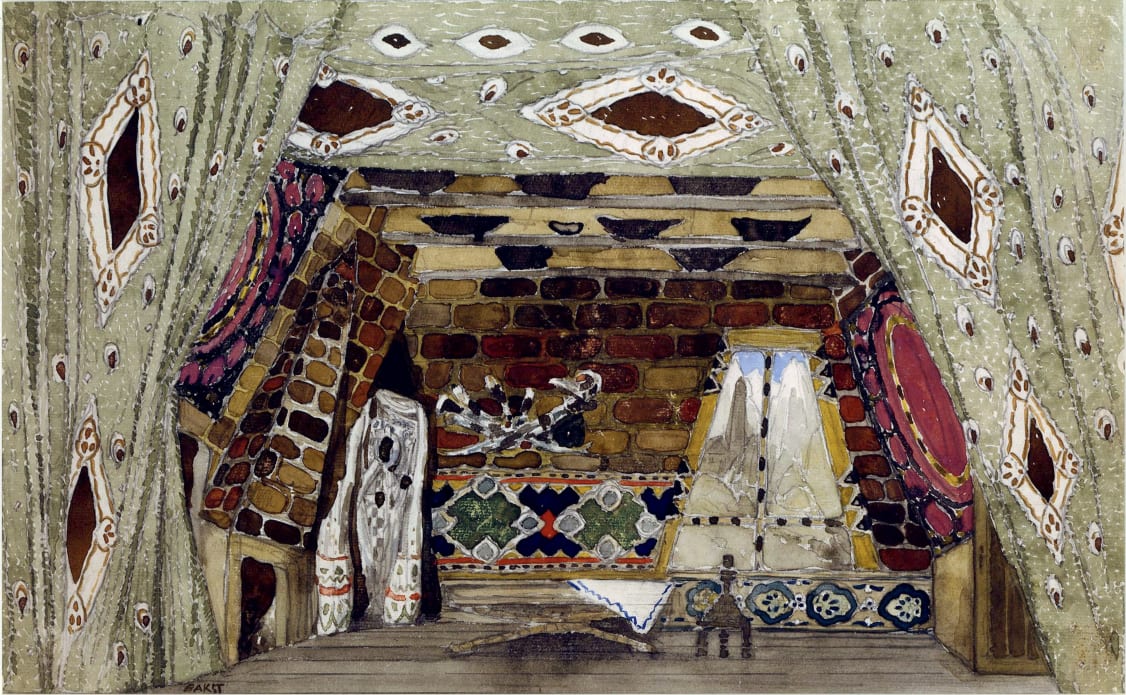Prices
Show / Event
Venue
Experience
No result. Clear filters or select a larger calendar range.
No show today.
© Bertrand Huet

Part II
The stage
Leon Bakst stayed in Paris on several occasions before 1909, but the West discovered him through the first shows of Diaghilev’s company, the Ballets Russes. The stage designs and costumes for Cleopatra (1909) and, especially, Sheherazade (1910), immediately made Bakst’s reputation as an avant-garde stage designer and “magician of colours” (Gabriele D’Annunzio); that reputation remained solid until the First World War. All the stages and companies that were most in the public eye asked to benefit from his talent. A discerning and passionate reader of classical texts, Bakst worked for all types of stage designs (ballet, opera, theatre, revue, etc.) and for theatres around the world, drawing stage designs and costumes for over seventy shows, and, from 1910, sometimes also writing ballet plots.
In addition to his work for the Ballets Russes, Bakst entered into an ongoing collaboration with the dancer Anna Pavlova, as well as with the dancer, choreographer, and patron Ida Rubinstein. Bakst was on bad terms with Diaghilev, who baulked at paying him, took him to task for his outside commitments, and blamed him for the failure of Sleeping Beauty. In 1921 Bakst broke away from the Ballets Russes and found a new protector in the director of the Paris Opera, Jacques Rouché. His colossal work drew on various sources (the East, Antiquity, and the Great Masters), whilst offering a very personal and original æsthetic synthesis that gave such a singular identity to the Bakst style.
